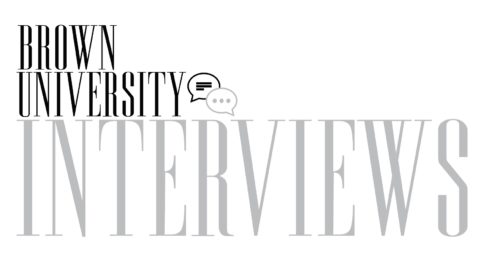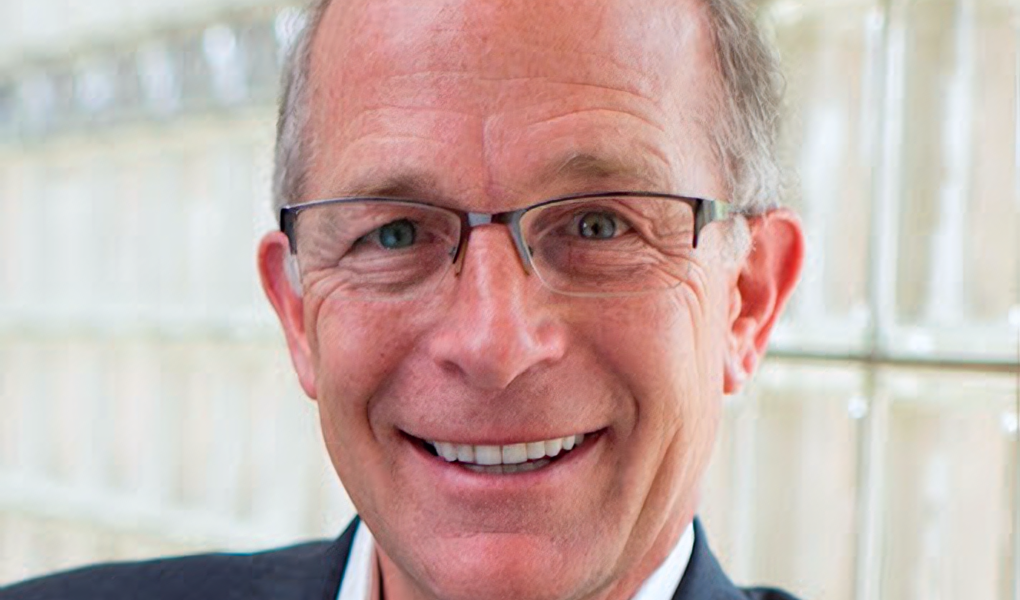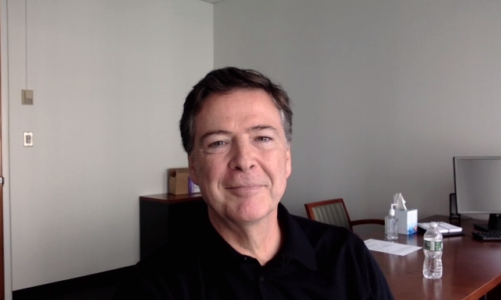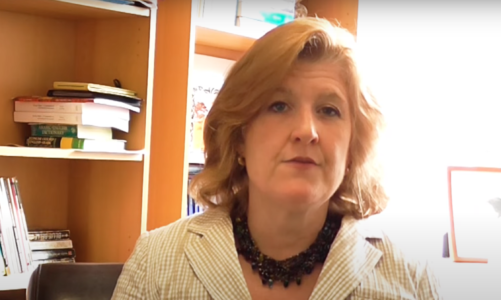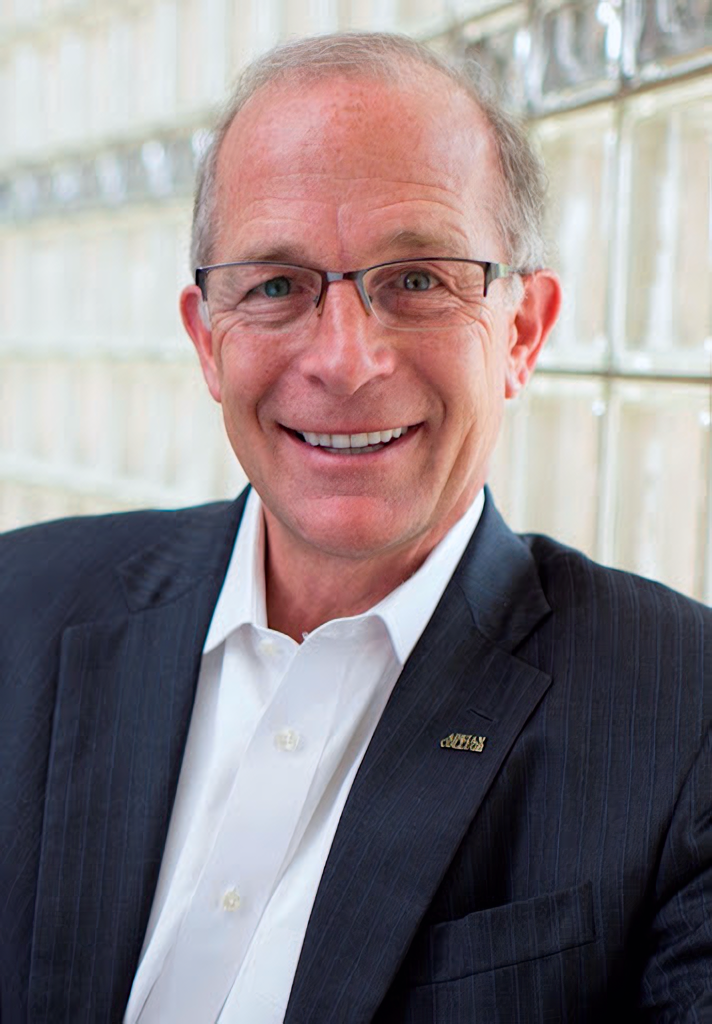
Dr. Jeffrey R. Docking is the president of Adrian College and author of books focusing on issues facing small private colleges. Dr. Docking assumed leadership at Adrian College in 2005 and he swiftly implemented a strategic plan to grow enrollment through leveraging extracurriculars that successfully alleviated the financial woes of the institution as detailed in his first book, Crisis in Higher Education: A Plan to Save Small Liberal Arts Colleges in America (2015). The next strategy Dr. Docking launched at Adrian College was a course-sharing model in collaboration with other institutional members of the Lower Cost Models for Independent Colleges Consortium (LCMC) to expand academic major offerings for a fraction of the traditional cost of starting a new program. Dr. Docking detailed the origins of the LCMC and the process of developing a platform (Rize Education) to facilitate course sharing in his second book, The College of the Future: Lowering Costs for Students by Fixing the Business Model of Higher Education (2022). Dr. Docking is an innovator in higher education and the next issue he plans to address is driving down the exorbitant costs students must pay to pursue a college degree.
Kevin LoGiudice: You lived much of your early life living on a college campus with your father serving in academia/pursuing a graduate degree. Did this contribute to your chosen career in academic administration?
Dr. Jeffrey R. Docking: I lived in campus housing at Michigan State University as a young kid with my dad pursuing his Ph.D. Today, I wouldn’t know what it’s like to live in a town that is not a college town; I’ve lived in college towns my entire life. I have always loved everything about university campuses. I love being around groups of educated people, and the multicultural populations that colleges attract. I love the civil discourse on campuses, whereby, ideally, people with differing opinions can debate and search for commonality and truth without fear of violence or reprisal. All of that was foundational to my career.
Tell me about your own time studying at Michigan State University and your early career.
I had five majors in college largely because I wasn’t introspective or mature enough to know my true passions. I didn’t want to settle, but I couldn’t figure out what I wanted to do. I feared being one of those people who dreaded going to work each day. I wanted to love my work, to be in a position where work was play; to find “flow” in my career. My dad called me early in my junior year and said, “Look, if your mother and I are going to keep paying for this college, you’ve got to pick something!” So, with my back against the wall, I thought, “Well, I’ve always liked current events and politics, so I guess I’ll go into broadcast journalism.” I graduated and took a job at a television station reporting in Lansing, Michigan. It was okay, but I wasn’t all that good at it. I recognized it wasn’t my thing, so I pondered what I might want to do next.
After your stint in broadcast journalism, where did your career lead you next?
I’ve always been interested in the larger and more philosophical questions of life. Why are we here? What’s the purpose of life? Is this all just a big joke, or is there a deeper meaning to our existence? So I decided to enroll in a seminary to earn a Master of Divinity degree, so I could ask these questions in an academic environment surrounded by mentors, great thinkers, and books. I wanted to know if god exists. And, if so, do we interact with this god? How does that all play into life? I did that in Evanston, Illinois, on the campus of Northwestern University for three years at a little seminary called Garrett-Evangelical Theological Seminary. It was a deeply meaningful, introspective, exciting, and enlightening time in my life.
But, ultimately, I didn’t want to go into church ministry, so when I graduated I looked back at the great writers I studied during my years in divinity school and asked, “who still has a relevant message for today?” And my answer was, Dr. Martin Luther King Jr. King’s teaching’s in nonviolent social change — essentially, a model for solving disagreements without shooting each other — seemed very applicable to me then, and still do today. With this in mind, I decided to earn a Ph.D. in Social Ethics studying King and other non-violence advocates. To do this, it made good sense to study at Boston University where King attended as a Ph.D. student and ultimately left his archives from the Montgomery Bus Boycott to the Great March on Washington.
After completing your doctorate, did you immediately transition into a career in higher education administration?
I wanted to transition into the classroom, to be a full-time professor. But this was 1994 and there were only three teaching positions available in ethics, from what I recall. I was also running out of money. But this time, my wife and I had three children and another one on the way. We were living in dorms to afford the Boston housing market and eating as many free meals as possible from the dining hall. I had to put food on the table, and my wife had been a complete saint living in this dorm with me and all these kids. So I took a job in administration because there was nothing in teaching.
I was very lucky. I found an administrative job at a small private college in southwest Pennsylvania, Washington & Jefferson College. Soon after I was hired as the Dean of Students, W&J hired a new president, Brian Mitchell, and he gave me the opportunity to become a college president by giving me a seat at the table, important projects to work on, mentoring, advice, and confidence. President Mitchell promoted me to Vice President of Student Affairs and then to Assistant to the President. Ultimately, Brian left to become President of Bucknell University and I found a presidency at Adrian College in southeast Michigan.
What state was Adrian College in when you took over as president?
I had never been to Adrian, Michigan until I interviewed for the presidency in 2005. I also did not know a thing about the College. I quickly learned that 40% of the student body was first-generation. We attracted kids from small towns and working-class families in and around Detroit. In my first year we shrunk to about 840 or 850 students. We were hemorrhaging money to the tune of nearly $1.5 million annually, with a small endowment (approximately $22 million), and a boatload of deferred maintenance, underpaid employees, and poor morale.
What was your vision to alleviate Adrian’s financial woes?
I started with the data. I went to my CFO and asked how much revenue we earn on every additional student who enrolls at Adrian College. After discounting, that number was $15,000. I then asked him how many students we needed to balance the budget, to give all employees a standard 2% raise every year, and keep the lights on. That answer was 1,400 kids! I thought, “Wow, how are we going to do this?” Our freshmen class that year was only 263 kids. We needed a plan, a strong, easy-to-understand, viable plan to grow our first-year class from 263 to 400. Nothing short of 400 freshmen each and every year would be enough for us to survive.
What plan did you undertake to attract more students?
To do this, to create this plan, we did something called, “Getting into the head of an 18-year-old,” and asked, “Why does an 18-year-old choose a college?” We thought that every kid knows, “If I go to college, I’m going to get a good education,” but what other factors would drive students to select a particular college in a very crowded industry? Around this same time, I’ll never forget, I was watching a University of Alabama football game on a Saturday night, and some middle-aged fan ripped open his shirt to reveal a big Alabama “A” painted on his chest. I remember thinking, “This is outrageous!” But this guy is so passionate that he is willing to show his 55-year-old chest to the entire world to express his love for Alabama football. This sparked the idea to expand sports and other extracurriculars to attract students. People of all ages love sports and will make decisions based on their love of athletics. Shortly thereafter we spent about $6.5 million to construct an ice arena to attract students interested in men’s and women’s varsity hockey, club hockey, synchronized skating, and figure skating. Now when you walk into our Ice Arena you will see pictures of 350 “ice athletes” playing on one of our teams. I dare say that not one of these 350 students would have given Adrian College serious consideration without this ice arena.
Today, we have expanded extracurriculars all the way to include a bass fishing team which is ranked #1 in the nation; we even started a varsity cornhole team this year and the kids love it! That was the idea behind our leveraging model. They may come in as soccer players, lacrosse players, or baseball players. But they leave as chemists, teachers, accountants, or computer scientists.
How did your plan for investing in sports and extracurricular activities impact the campus community?
To launch the plan, I invited the entire campus community — professors, custodians, secretaries, and administrators — to the Eagle Crest Lodge in Ypsilanti, Michigan. The College paid for all their meals, gave them a nice hotel room, booked a big ballroom, and outlined the cocurricular-leveraging plan for them in a completely transparent way. Over a two-day period of time, I laid out the plan: we’re going to start several new sports, we’re going to build new facilities, and we’re going to bring in better students who can do the academic work you expect. “This is the good news,” I said. “The bad news is this is very expensive.” I also told the campus community there may be a better plan out there, but this is the only plan I’ve got. I gave people 2–3 weeks to come to me with a better plan, but if I didn’t hear from anybody, this is what we’re rolling with. Well, no one came through my door.
I embraced those that were with the plan because I needed all the supportive colleagues I could get. This was the first group. The second group consisted of the people who openly did not support the plan. I respected their opposition but told them they should look for an institution that was more consistent with their values and opinions. The third group — those who did not like the plan, would not support the plan, would work to undermine the plan, but wanted to continue to work at the College — had a problem. I let several of these people go.
What were the intangible returns on investment to Adrian College beyond dollar amounts?
The intangibles included many things. First, at small colleges in rural areas, the vast majority of students often go home on the weekends. The dorms are dark, and it’s a ghost town. When you start new sports, Friday and Saturday nights are alive, fun, and attractive. Students want to stick around, root for the home team, and celebrate the wins.
Secondly, our goal was to grow enrollment to 1,400 students, but we surpassed that to 1,850 kids. We went from 16 sports to 50, so we are bringing in a lot more successful student-athletes. Then, other kids say, “Hey, I’m not skilled enough to play a sport at the varsity level, but I love athletics, so I’ll try to be the manager or a fan so I can be around the sport.” Also, your esprit de corps grows on campus because everybody is juiced about winning, which your teams will do when you treat them right. Now you’re bringing in better students. Jocks know how to budget their time, work as a team, get along with people, and all that. So your academic profile goes up. Additionally, you start to get national attention because winning on a national level makes people think, “What’s going on over there?” Success follows success.
Fundraising has also improved dramatically. It was difficult in the beginning to convince a wealthy donor to give money to plug holes in a sinking ship. As I said earlier, the College was running a $1.3 million deficit. Things were rough. The residence halls were dated, and roofs were leaking across campus. But when we started to grow people were much more willing to open their wallets. We quickly raised $15 million for new facilities and I borrowed another $15 million.
Your first book has a great quote, “There are some pretty unpleasant stereotypes floating around in higher education, and these perpetuate the idea that having too many athletes reduces the diversity of student interests on campus… and that if an institution brings in too many of them, they will overwhelm a campus with one set of viewpoints and opinions.” How did you overcome the pushback from faculty that witnessed all of this early investment into athletics?
Prejudice does exist on these campuses in many forms. The first two people I put on my cabinet when I came to Adrian were the Vice President for Academic Affairs and the Athletic Director. Every time I scheduled a cabinet meeting, which was every Tuesday morning, they were sitting directly across from each other. The reason I placed the AD and the VPAA in the same meeting was to cut through the prejudice and stereotypes that often attach to these positions. When they are not in the same room, the VPAA would often say — in so many words — can you believe the AD brings in all these underqualified athletes? Meanwhile, in other meetings, with the VPAA absent, the AD would say, academic affairs are imposing standards that make it impossible to run a successful athletic program at this institution. So I thought, okay I’m going to have these people talking in front of each other, and we will see how that goes. And you know what? Respect took over; no more rolling eyes; they worked out their differences.
So that was the plan, that’s how we put it together, and that’s what led us over the next fifteen years. However, I’ve been here eighteen years and that’s where book two comes in.
In your first book, you mentioned online education as one of the strategies that do not boost enrollment. However, in your latest book, online education is a core principle in your vision of “the college of the future.” How has your opinion on online education evolved?
Great pick up there and I would say two things: my mind has changed about online education, but I’ll give myself a little bit of a break and say that online education has also changed. When I wrote the first book, online education was poor. The way that technology has unfolded, online education has improved significantly.
Admittedly, I like the way education has been done at small private colleges for the past 250 years. I would not have changed anything if I didn’t have to. The idea of moving to campus, parents dropping you off at the dorm with tears at the door, and all of that wonderful four-year experience of living with other intelligent people is perfect. The problem is that the business model is broken, as I said in my second book, The College of the Future: Lowering Costs for Students by Fixing the Business Model of Higher Education. We are now being forced to fix a business model that will be as extinct as the dinosaurs if nothing is done. I don’t mean tweaking around the edges; I mean a disruption in higher education that allows us to run these campuses much more efficiently.
The secondary crisis is how expensive higher education has become for families. What I say to my colleagues is, “innovate or die.” You might think that mantra only applies to schools like Adrian but there are schools with multi-billion dollar endowments hemorrhaging money. You can’t follow the old model forever. My point is that math is a very, very intransigent thing — stubborn — and this is not an opinion. When you run out of money, you run out of money. These schools are starting to run out of money, and they’re closing, and it’s sad. It starts with the small private schools, but it will go on to other schools too. So that is what led to book two. A realization that even if we like it the old way or don’t believe in online education, higher education has got to go the way every other sector of society has, which is to leverage the Internet to bring efficiencies to serve the marketplace.
What was your solution to the impending financial crisis of higher education?
Our first solution was the Lower Costs Model Consortium (LCMC), a small group of school presidents who could see the looming financial crisis in higher education. They said,“We don’t want to be out of business before we admit that there is a big problem.” This group of eight presidents had to figure out a way to reduce tuition costs by 30%. That group grew to nineteen presidents, and we were trying to figure out how to execute different strategies and attempt to collaborate in some ways. But (a) no one had time, (b) no one had money, and (c) no one had figured out that it is much more complicated to collaborate. I can’t just offer a class and say, “I’m going to share this with the world, and everybody that wants to take it can take it for a low cost.” Time zone differences, financial aid issues, communication, and student-professor connections cause a complicated situation for students.
We needed a private entrepreneur, which ended up becoming Rize Education, to come in and power the LCMC. They will bring in private money, hire people, and make this entire collaboration possible through a platform that sorts out all those problems. That is when Kevin Harrington and Connor McCarthy from Harvard, entered my life. They took the office right next to me, and I made them Assistants to the President for Innovation. We would need about $7 million to kick things off. Those two guys have now turned into a company of twenty and that initial group of college presidents has turned into one hundred thirty-five.
We got into the mind of an 18-year-old once again. Just like we started hockey to bring in student-athletes, we could start a new cybersecurity major to attract kids interested in the latest innovations in the industry. Furthermore, we condensed resources without the need of hiring new professors or building new classrooms by having one college teach the classes and share them with the others through the Rize platform. The Lower Costs Model Consortium, made up of private 501(c)(3) traditional colleges work together with Rize, the independent, for-profit company that makes course sharing and collaboration possible.
What are the logistics between the home institution and the teaching institution as facilitated by Rize Education?
Take supply chain management, for example. This is a very popular major right now due to high industry demand. Adrian College, the home institution, went to a school that offered supply chain management, Lasalle University, out near Boston, and asked them to be the teaching institution for some classes for us. We don’t want to dilute the learning experience by having classes with an excessive amount of students. So every time a class gets to be, I think it’s 25 students for this major, they need to hire another professor to teach it. That costs them money for an adjunct lecturer. Rize helps them source another teacher, then Adrian pays a fee each time a student takes a supply chain class through the Rize platform offered by Lasalle. Some of that money goes to Rize, and some of it goes to Lasalle to pay the professor, develop the curriculum, and all else that goes with it. The return on investment is significant for Adrian because we wouldn’t have gotten that kid interested in supply chain management without offering it. Over the student’s time at Adrian, only five courses are taken in the shared arrangement because we have a robust business department with all the accounting and logistics courses already offered on campus. That is barely one class a year for the student online through Rize. It is about trying to preserve the best things about the traditional college experience while adding to the top-of-the-line revenue by starting these new majors and bringing in more kids without the expense that comes with it.
Do colleges typically offer more of the introductory level courses or more of the specialized higher level courses through the Rize platform to students?
It is a little bit of both and depends on the major. For supply chain management, it tends to be more of the higher level courses. But an example on the opposite end would be computer science, where you’ve got to take more than five courses online because we don’t have a robust department to step into at Adrian College. You’re taking some intro courses, you’re taking the mid-level, the high-level stuff, and so you’re kind of covering all of it in computer science. What you get on campus is your distribution requirements, your electives, and maybe something you’re interested in outside your major. The majors must go through the governance process where the faculty approve all of these courses. It’s not just dumped on the institution. They develop the curriculum and figure out the classes actually needed in the shared arrangement.
What benefits has Rize Education brought to Adrian College beyond the course-sharing model?
The benefits have been profound, to the extent that previous to COVID, students wouldn’t go to Adrian to do online education. But after COVID hit, online education has improved so much, and kids are used to taking their classes online. Number one is that students like online courses and want to take them at Adrian. Secondly, athletes don’t want to miss class, and it’s a bummer, but they have to sometimes because the bus is leaving for weekend games. All these classes can be taken synchronously or asynchronously, and you can take them at your own pace. Thirdly, these classes aren’t just thrown together, they are put together with the best academicians around. For supply chain management, we went to a preeminent scholar in the field, Rudy Leuschner at Rutgers, and to industry-leading companies for consultation on what they want kids to learn. With computer science, we went to Charles Severance at the University of Michigan. These are very practical, outstanding classes. We survey students now that we have had thousands of them nationally go through these courses and 81% say the classes are as good as or better than what they are getting on campus.
Having no prior business experience, how did your background prepare you to become such a financially successful leader and innovator of higher education?
Well, there are certainly a lot of things that I am not good at, so I’m not going to pretend that I’m all things to all people, but there are two things I do think I have a knack for. The first is that I think I can see through complicated situations, cut out the noise, and get to the heart of an issue. When I got here, I realized we had all kinds of problems: low staff morale, significant deferred maintenance, kids that probably shouldn’t have been in college, and a town that was dying. I think I was able to cut through all that to see that my issue was money. I didn’t have any money. I had to figure out how to get money. If I could get money, so many of these other problems would go away. When you realize that your problem is money, you can get serious very quickly about seeing the world as a business. I did a lot of self-educating, learning a lot of things like return on investment and accountability and many of the nuances and practicalities that are required in a viable business plan.
The second thing I believe I can do is read people. This goes back to the fan with the “A” on his chest at the University of Alabama’s football game. I saw passion in his eyes and a lot of other people around him with the same passion. I thought sports is such a driving force and that human nature is competitive. I think understanding human nature is what led me to look at the world through the eyes of an 18-year-old and say, “I’ve got to be empathetic here. I’ve got to understand what motivates these people.” Fortunately, it worked.
What motivates you to write these books where you share your models for increasing enrollment at small private liberal arts colleges?
I’ve wondered why I write down the secrets to the sauce in a book and share it. I think it comes from two places. One is that I never had the mindset that my kids matter, but yours don’t. I care about 18–22 year olds, and I really think the key to a better life is education. I really believe that people are happier, they’re healthier, they live in safer neighborhoods, and they’re better citizens when they get educated. The transformative process that happens between 18–22 as novice adults turn into real adults is absolutely amazing. If I can share that both with my kids here and with kids at a lot of other schools that may be in trouble, then I’m good with that. The second reason why I’ve been willing to share is that I think the best way to get better is to share it. Now that everyone knows the secrets of the sauce and they’re making pizzas as good as mine, I have to figure out a better way to make a pizza so it keeps me hungry.
What do you see as the next issue you plan to attack in higher education?
It goes back to the quote that you read about people that are supposed to be into diversity, openness to others, accepting people as they are, and not pre-judging them. Then these athletes come in, and they think, “Oh, he’s an athlete. He’s clearly a dumb jock.” I feel the same way about the lip service that higher education pays to accessibility, and we haven’t really done everything we need to do to drive down the cost. We represent a very small fraction of the people in this country and certainly the people in this world. If we really believe that education is the key to a better life, we can’t just continue to ratchet up the price to the point where poor kids tell themselves, “Forget it. It’s never going to happen. Why even apply to college?” I hope this will have the transformative power to drive down costs at schools everywhere and that higher education is more accessible. That is going to require change. Change creates fear. Fear creates backlash. The biggest thing that people need to be successful these days is courage. That’s what is lacking. If they can get the courage, then they will make the changes that we all know we need to make higher education a possibility for everyone regardless of economic class.
*This interview has been edited for length and clarity.
